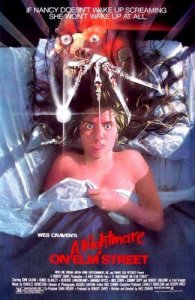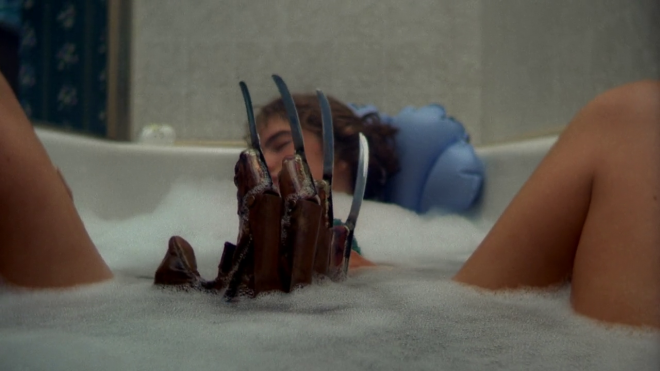 It’s regrettable that it often takes an actor or director dying before I decide to catch up on some of their movies. This week’s culprit was Wes Craven, and I concede that both horror films and ’80s films make up a particularly weak area in my film lexicon, so it’s no wonder that his classic “A Nightmare On Elm Street” was an unfortunate blind spot.
It’s regrettable that it often takes an actor or director dying before I decide to catch up on some of their movies. This week’s culprit was Wes Craven, and I concede that both horror films and ’80s films make up a particularly weak area in my film lexicon, so it’s no wonder that his classic “A Nightmare On Elm Street” was an unfortunate blind spot.
The film is no doubt an ’80s classic, filled with horror, gothic and literary references and the inspiration for many others for years and decades to come. While “Elm Street” is not as self-aware as Craven’s later “Scream” films, it is so plugged in and conscious of all the themes it borrows from, and Craven is nothing if not a learned auteur. Tina crawling on the wall and being hurled around like a doll recalls “The Exorcist.” That the film switches protagonists from Tina to Nancy part way through is a big nod to “Psycho”. And the sheer buckets of fake blood are purely a staple of ’70s and ’80s slasher movies and B pictures.
The film works gangbusters for a number of reasons. Firstly the idea that we’re not safe even in our dreams, even under the covers of our bed, in our sleep or in our own minds, where we so often escape for solace, is terrifically scary. The film completely overlooks the science of dreams and sleep as well, to the point that Freddy feels omnipotent and their attempts of avoiding sleep entirely feel hopeless. Second it has a perfectly simple, iconic score that so many films, horror or otherwise, overlook today. Third, Freddy Krueger is a wonderful villain. He’s got physical features, from his fingernails like knives, to his pork belly hat, to his dirty striped sweater, that when the characters describe him it makes him instantly recognizable to other teens experiencing the nightmares and to the parents who were responsible for killing him. Better yet, he’s taunting, sadistic and even teasing, going as far as to reveal his true, monstrous form to Nancy and Tina. Finally, it uses sexuality as a catalyst for horror in more ways than one and in more sophisticated ways than many teen slasher films do. There are probably thousands of pages of think pieces or academic papers dedicated to the one shot in this movie where Freddy’s claws reach up from in between Nancy’s legs while she’s sleeping in the bath.

But those have been areas that have been well-tread. What most interests me is how filmmakers dream. “A Nightmare on Elm Street” is all about dreams, but dreams of course are never the same between two people. We experience dreams in different ways and they provide different sensations for us depending on who’s dreaming. In “Elm Street”, Nancy and Tina wake up in their own worlds. Craven plays tricks on his audience to hide whether we can tell if we’re actually dreaming. When Nancy falls asleep in school, it looks as though her eyes have simply flickered shut for a moment. There’s no change in setting or in visuals that would indicate immediately that this is a dream, but before long we see something that’s out of place. The only problem is that it feels real.
We also know that getting hurt or killed in the dream world can hurt us in the real world, and that Nancy can bring back objects like Krueger’s hat into reality. And for the most part the laws of the dream world behave as they do in the real world. Only occasionally does the geography change, like when a curtain seals a boiler room wall behind Nancy, or when she hustles up the stairs only to get caught in quicksand sludge on each step.
Compare all this to something like “Inception”, in which Nolan’s dreams are transportive. They feel real, and we forget how we arrived there, but suddenly we can be in Paris, and suddenly we can be skiing in the Alps. Or what about “Eternal Sunshine of the Spotless Mind”, where there are no physical laws within dreams, where things are malleable and fantastical.
I’d like to believe that each filmmaker dreams differently, and how they convey dreams in their films says something more about them as filmmakers. It’s a project I hope to explore in more detail sometime down the line, but until then, having watched “A Nightmare on Elm Street” finally, I’m having trouble getting sleep of my own.